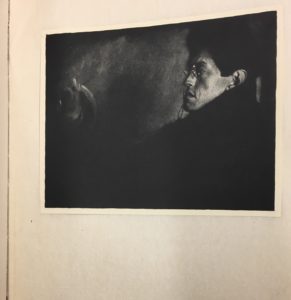Camera Work by Alfred Stieglitz
Upon visiting the Special Collections archive, I was most drawn to Alfred Stieglitz’s photographic journal, Camera Work. Stieglitz is remembered by his critical role in promoting photography as an art form on par with painting and other conventionally accepted mediums in addition to his function in organizing and reorganizing artistic platforms in the late nineteenth and early twentieth century’s avante-garde art scene. Camera Work was a journal Stieglitz began in 1903 in order to carve out a visual space exclusively by and for photographers during a time in which photography was both less common and valued more for its scientific function.
The particular copy in the archive’s collection however is dated from 1914, therefore eleven years older than the birth of the first issue. The journal’s minimal form, clear attention to precise details, and high publication quality for its time offer insight towards Stieglitz visual and ethical sensibility, as he was notoriously responsible for a perfectionist oversight of all aspects of Camera Work’s publication process. The individual images of landscapes, portraits, and infrastructure are as effective in conveying momentary snapshots as the collective body is in conveying a snapshot of early photography’s place in the modern art world. The photographs point to the immediacy valued in modern art that seeks to deviate from realism’s obsession with the past and time consuming practice of extraordinary detail. However, Camera Work engages in this dialogue with its elaborate hand-drawn letters and crisp binding that required the same type of time consuming craftsmanship. As such, Stieglitz’ journal seems to effectively establish its respected place among painterly work of its time while also creating a tension between these conventional standards given that Camera Work’s was birthed out of Stieglitz’s effort to create new channels for artistic curation and appreciation (much like the Salon des Refusés).
Being in the presence of this artifact solidifies Camera Work’s societal intent and Stieglitz perfectionist reputation. Having the opportunity to physically observe and touch the photos that had to be adhered (not digitally printed) to each page of each issue garnered a new type of respect far greater than if I had simply viewed these images digitally. Given Stieglitz involvement in the publication, I believe being in the physical presence of the journal was necessary for understanding and honoring the journal’s sheer novelty and intent.

